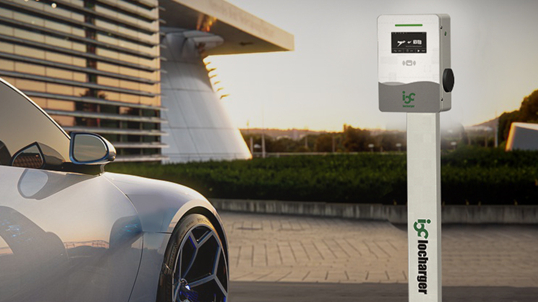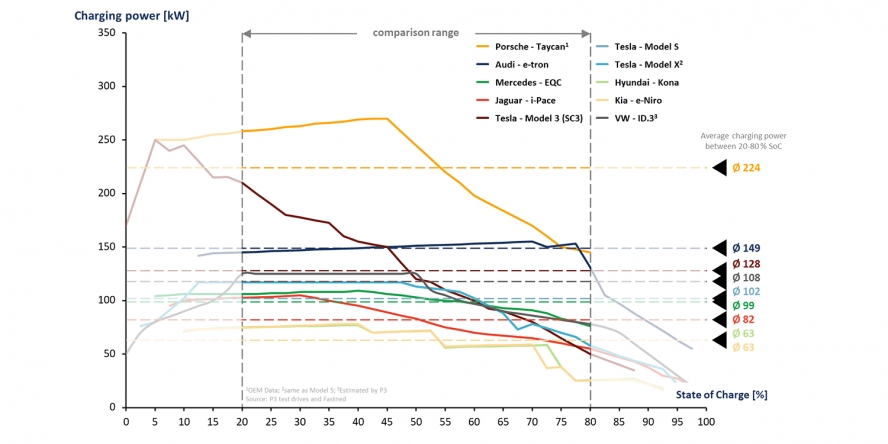
Praktyka mierzenia wydajności ładowania pojazdów elektrycznych (EV) na podstawie czasu potrzebnego do osiągnięcia celu. 80% stan naładowania (SOC) zamiast 100% wynika z kilku technicznych i praktycznych powodów:
Skład chemiczny akumulatora i krzywa ładowania
Akumulatory pojazdów elektrycznych mają nieliniową krzywą ładowania, gdzie
- 0% do 80%: Ładowanie jest szybkie, ponieważ akumulator może przyjąć wysoką moc (faza stałego prądu).
- 80% do 100%: Szybkość ładowania znacznie spada (faza stałego napięcia), aby chronić akumulator przed przeciążeniem i przegrzaniem.
Oznacza to, że:
- Pierwszy 80% jest znacznie szybszy.
- Ostatni 20% trwa nieproporcjonalnie dłużej (czasami tak długo, jak pierwszy 80%).
Przeanalizujmy to pod następującymi względami:
1. Moc = Napięcie * Prąd
2. Ładowanie stałym napięciem i ładowanie stałym prądem
3. Optymalna krzywa ładowania. Pokładowy system BMS będzie komunikował się z systemem Ładowarka EV na podstawie informacji takich jak stan akumulatora / temperatura / aktualna pojemność i utrzymywać najbardziej odpowiednią moc do ładowania w najbardziej odpowiedni sposób.

4. Jak ładować samochód elektryczny w najzdrowszy sposób?
Nie ładować do pełna, powolne ładowanie jest główną metodą, a szybkie ładowanie jest uzupełnieniem. Podczas długiego postoju należy utrzymywać akumulator w temperaturze 20%~30%, najlepiej ładować go powoli co 3 miesiące, a następnie rozładować do 20%~30%.
